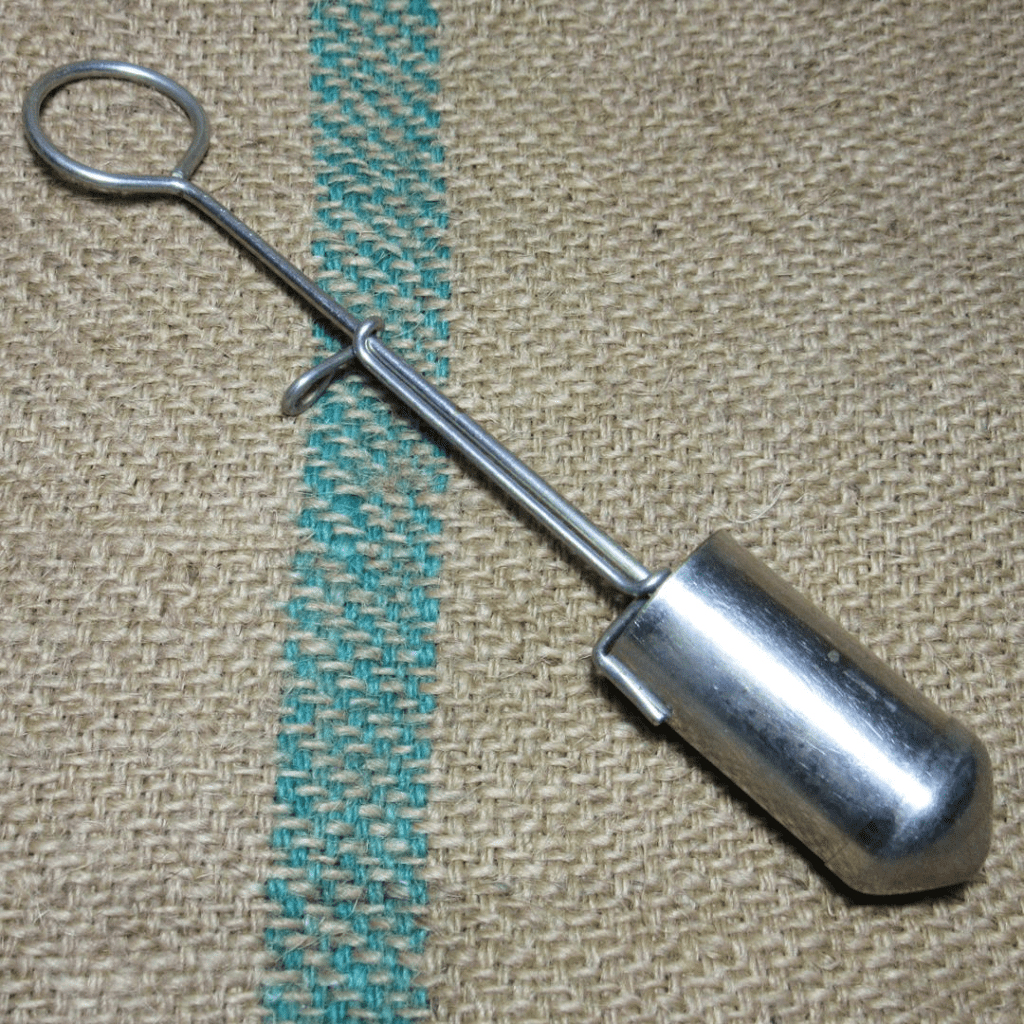
The Mystery in the Kitchen Drawer
We’ve all stumbled upon something odd in an old drawer—something that sparks curiosity, confusion, and a trip down the rabbit hole of Google searches. That’s exactly what happened when someone found this strange-looking metal gadget tucked away in their grandmother’s kitchen. Shiny, cylindrical, and a bit intimidating, it left folks scratching their heads.
Turns out, this isn’t just some forgotten trinket—it’s a piece of rural American dairy history. Meet the Chapin Cream Dipper.

So, What Is a Chapin Cream Dipper?
The Chapin Cream Dipper is a specialized vintage dairy tool used primarily in the early 1900s and mid-century America. Back before the days of homogenized milk and refrigerated trucks, many households and small farms separated milk and cream manually. And this odd-looking instrument played a starring role in that process.
It’s not a scoop, it’s not a whisk—it’s a precision cream sampler designed to extract cream from the top layer of unhomogenized milk. Basically, it’s a smart little dipper that helped farmers and homemakers assess the cream’s quality or use it for cooking, baking, or even selling.
The Science Behind Cream Rising to the Top
Let’s break it down: when raw, full-fat milk is left to sit, cream naturally rises to the top. This top layer contains most of the milk’s fat, which is why it was so valuable on farms. Before fancy separators and electric machines, families would leave their milk in a jug or wide pan overnight to let the cream settle.
Now here’s the clever part—rather than disturb the milk below or risk waste, the Chapin Cream Dipper could delicately reach in and draw just the cream from the surface. No splashing, no shaking, just precision.
Video: Antique Ice Cream Maker Restoration
How to Use a Chapin Cream Dipper (Old-School Style)
The dipper itself is made of stainless steel or tin and features a small, rounded scoop at one end and a simple handle on the other. Some models have a plunger mechanism or hole to help with suction. It’s about 6 inches long, just the right size to slip into a tall milk can.
Here’s how it was typically used:
- Let the milk settle in a jar or container for 12–24 hours.
- Insert the dipper gently into the cream layer at the top.
- Use the shape of the scoop to gather a sample or pour it off into another vessel.
- Sometimes, this was for testing butterfat content. Other times, it was just for gathering the cream for breakfast or butter churning.
Old-school farm tech at its finest.
Why It Mattered So Much on the Farm
In a time before modern quality controls and standardization, families had to rely on simple tools to determine the value and usability of their dairy products. The cream was considered the premium part of the milk—it was richer, thicker, and used to make butter, whipped cream, and more.
The Chapin Cream Dipper allowed farmers to quickly sample cream to judge color, consistency, and sometimes even taste. It gave a quick read on whether the milk was worth separating or selling. In essence, it was a farmer’s quality-control tool long before labs or technology entered the picture.

From Essential Tool to Forgotten Relic
Today, most people wouldn’t recognize a Chapin Cream Dipper if they saw one (unless you grew up around old farm gear). Why? Because modern dairy processing has all but eliminated the need for manual separation. Milk is now homogenized, pasteurized, and pumped through machines that handle cream extraction with precision.
Still, there’s something special about tools like this. They’re symbols of a time when self-sufficiency ruled, when milk came straight from the barn, and kitchen drawers doubled as miniature labs. If you find one of these dippers today, don’t toss it—it’s a functional piece of history.
The Collector’s Angle: Why These Tools Matter
Vintage kitchen tools like the Chapin Cream Dipper have found a second life in the world of collectors and rustic kitchen lovers. Some people hang them on their walls. Others keep them in glass cabinets alongside butter molds and hand-cranked mixers.
They’re also popular in historical museums, especially those focused on agriculture, homesteading, or food production. Every dent or patina tells a story—from small family farms in the Midwest to dairy cooperatives in New England.
Video: DeLaval U-10 Cream separator in action
Modern-Day Lessons from a Vintage Tool
You might not need a Chapin Cream Dipper today—but its legacy holds a powerful message. It reminds us that food didn’t always come from factories. That there was a time when understanding your food—from cow to cream—was part of daily life.
And maybe, just maybe, it inspires us to be a little more connected to where our food comes from today.
Conclusion: A Tool That Scooped More Than Just Cream
The mystery object in grandma’s kitchen drawer wasn’t some forgotten gadget or quirky trinket. It was a Chapin Cream Dipper—a tool rooted in tradition, utility, and the simple wisdom of the farm.
Though modern kitchens have moved on, the story it carries is rich with history, resilience, and a time when even scooping cream required just the right tool. So next time you find something odd and old-fashioned, don’t dismiss it. It might just be another lost piece of genius waiting to be rediscovered.



